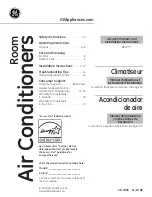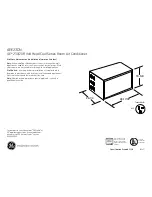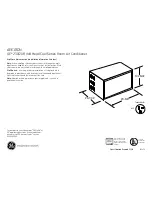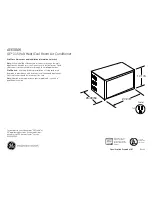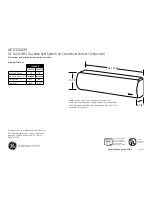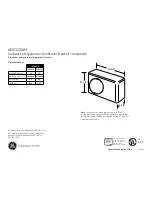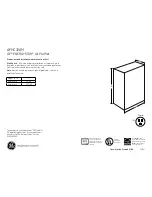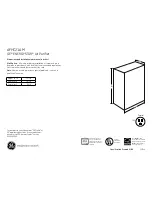
13
Triple Evacuation Procedure
A Micron or Torr gauge must be used for this procedure.
1. Discharge the oxygenfree nitrogen and evacuate the
system to a reading of 8000 Microns (8 Torr) using all
service valves.
2.
Break the vacuum by allowing nitrogen into the port
connections (liquid and gas line pipes) until a positive
pressure is achieved.
3.
Evacuate the system to a reading of 5000 Microns (5
Torr).
4.
Break the vacuum by allowing nitrogen into the port
connections (liquid and gas line pipes) until a positive
pressure is achieved.
5.
Evacuate the system to a minimum reading of 500
Microns (0.5 Torr).
6. For a moisturefree system, ensure the vacuum is
held without movement for a minimum of 4 hours.
7. If vacuum fails to hold, carry out steps 2 through 6
until vacuum holds.
Wiring Connections
In the U.S.A., wiring must conform with current local
codes and the current National Electric Code (NEC).
In Canada, wiring must conform with current local codes
and the current Canadian Electrical Code (CEC).
WARNING
Electric Shock Hazard. Can cause injury or death. Unit
must be rounded in accordance with national and local
codes.
Line voltage is present at all components when unit is
not in operation. Disconnect all remote electric power
supplies before opening access panel. Unit may have
multiple power sources.
CAUTION
All terminal connections must be made as illustrated
in the following diagrams. Improperly connected wiring
could damage unit or cause communication errors
between indoor and outdoor units.
Outdoor Unit
• Refer to unit nameplate for minimum circuit ampacity
and maximum overcurrent protection size.
• Make all electrical power wiring connections at the
outdoor unit.
•
Be sure to reattach all electrical box covers after con
nections are complete.
Indoor Unit
• Indoor unit is powered by the outdoor unit.
• Communication, power and ground wiring Use one
stranded 3conductor with ground wire.
•
See “Table 7. Single Zone Installation Wiring Require
ments” on page 14 for wiring requirements.
NOTE:
When installing a condensate pump the line voltage
will have to be broken by using the condensate
wiring or through the use of an external relay or
contactor.
IMPORTANT
All illustrations listed are typical wiring diagrams. Refer
to the wiring diagram on the unit for actual wiring.
Terminal block
Terminal Block
Cover
Screw
Cable Clamp
The wiring diagram is located
on the inside of the indoor unit’s
terminal block cover.
Figure 27. Indoor Unit Terminal Block
208/230V Outdoor Unit
Terminal Block
From Power
Supply
Terminal Block
208/230V Indoor Unit
Outdoor Unit
Indoor Unit
3
2
L1
L2
1
Y/G
1
3
Y/G
Y/G
115VAC Outdoor Unit
Terminal Block
From Power
Supply
Terminal Block
115VAC Indoor Unit
Outdoor Unit
Indoor Unit
3
2
L
N
1
Y/G
1
3
Y/G
Y/G
*
*
18 and 24K
unit has
five terminal
sets.
Figure 28. Single Zone Wiring
Summary of Contents for MCA Series
Page 20: ...20 ...
























